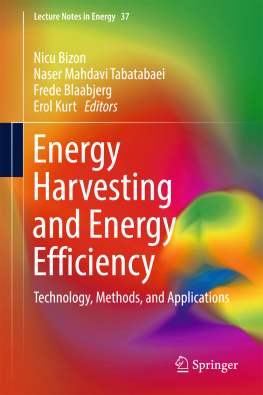Henry Shu-hung Chung (editor) - Reliability of Power Electronic Converter Systems (Energy Engineering)
Here you can read online Henry Shu-hung Chung (editor) - Reliability of Power Electronic Converter Systems (Energy Engineering) full text of the book (entire story) in english for free. Download pdf and epub, get meaning, cover and reviews about this ebook. year: 2015, publisher: The Institution of Engineering and Technology, genre: Romance novel. Description of the work, (preface) as well as reviews are available. Best literature library LitArk.com created for fans of good reading and offers a wide selection of genres:
Romance novel
Science fiction
Adventure
Detective
Science
History
Home and family
Prose
Art
Politics
Computer
Non-fiction
Religion
Business
Children
Humor
Choose a favorite category and find really read worthwhile books. Enjoy immersion in the world of imagination, feel the emotions of the characters or learn something new for yourself, make an fascinating discovery.
- Book:Reliability of Power Electronic Converter Systems (Energy Engineering)
- Author:
- Publisher:The Institution of Engineering and Technology
- Genre:
- Year:2015
- Rating:5 / 5
- Favourites:Add to favourites
- Your mark:
Reliability of Power Electronic Converter Systems (Energy Engineering): summary, description and annotation
We offer to read an annotation, description, summary or preface (depends on what the author of the book "Reliability of Power Electronic Converter Systems (Energy Engineering)" wrote himself). If you haven't found the necessary information about the book — write in the comments, we will try to find it.
The main aims of power electronic converter systems (PECS) are to control, convert, and condition electrical power flow from one form to another through the use of solid state electronics. This book outlines current research into the scientific modeling, experimentation, and remedial measures for advancing the reliability, availability, system robustness, and maintainability of PECS at different levels of complexity.
Drawing on the experience of an international team of experts, this book explores the reliability of PECS covering topics including an introduction to reliability engineering in power electronic converter systems; anomaly detection and remaining-life prediction for power electronics; reliability of DC-link capacitors in power electronic converters; reliability of power electronics packaging; modeling for life-time prediction of power semiconductor modules; minimization of DC-link capacitance in power electronic converter systems; wind turbine systems; smart control strategies for improved reliability of power electronics system; lifetime modelling; power module lifetime test and state monitoring; tools for performance and reliability analysis of power electronics systems; fault-tolerant adjustable speed drive systems; mission profile-oriented reliability design in wind turbine and photovoltaic systems; reliability of power conversion systems in photovoltaic applications; power supplies for computers; and high-power converters.
Reliability of Power Electronic Converter Systems is essential reading for researchers, professionals and students working with power electronics and their applications, particularly those specialising in the development and application of power electronic converters and systems.
Henry Shu-hung Chung (editor): author's other books
Who wrote Reliability of Power Electronic Converter Systems (Energy Engineering)? Find out the surname, the name of the author of the book and a list of all author's works by series.

















